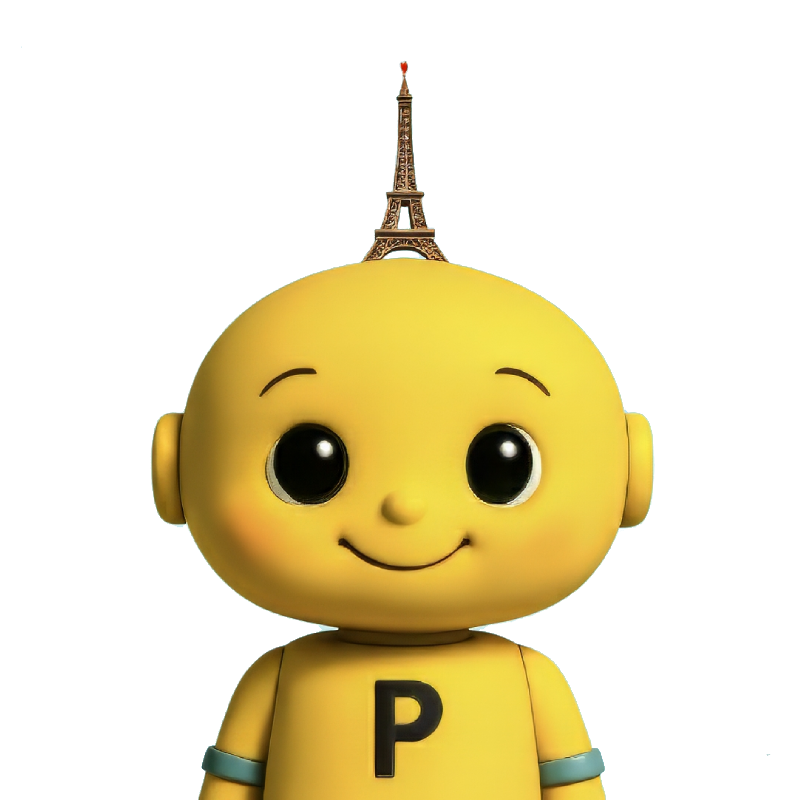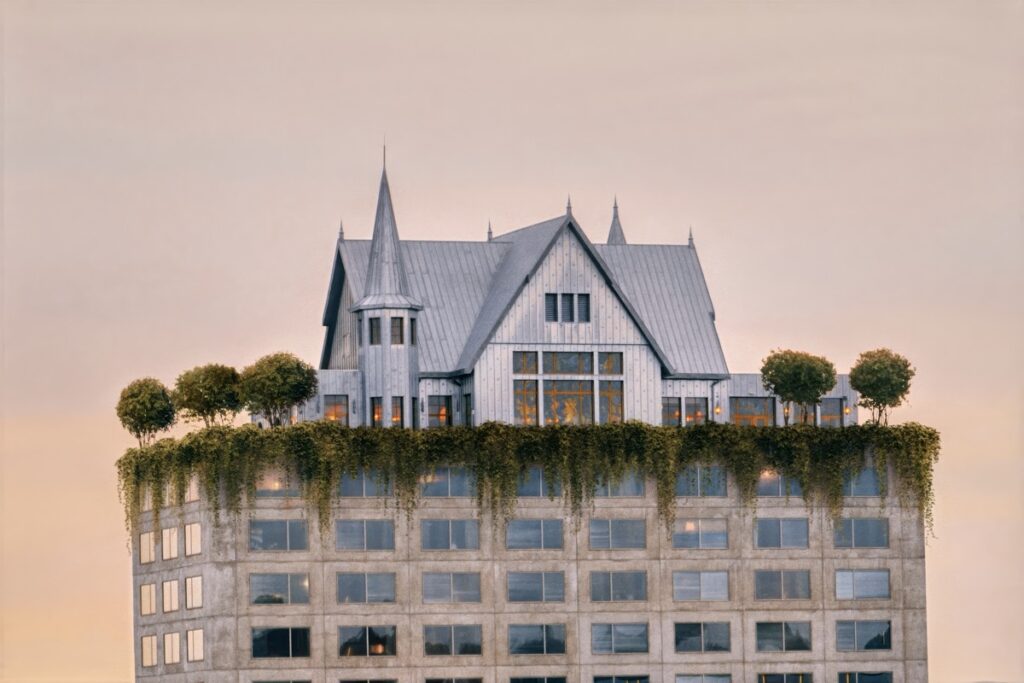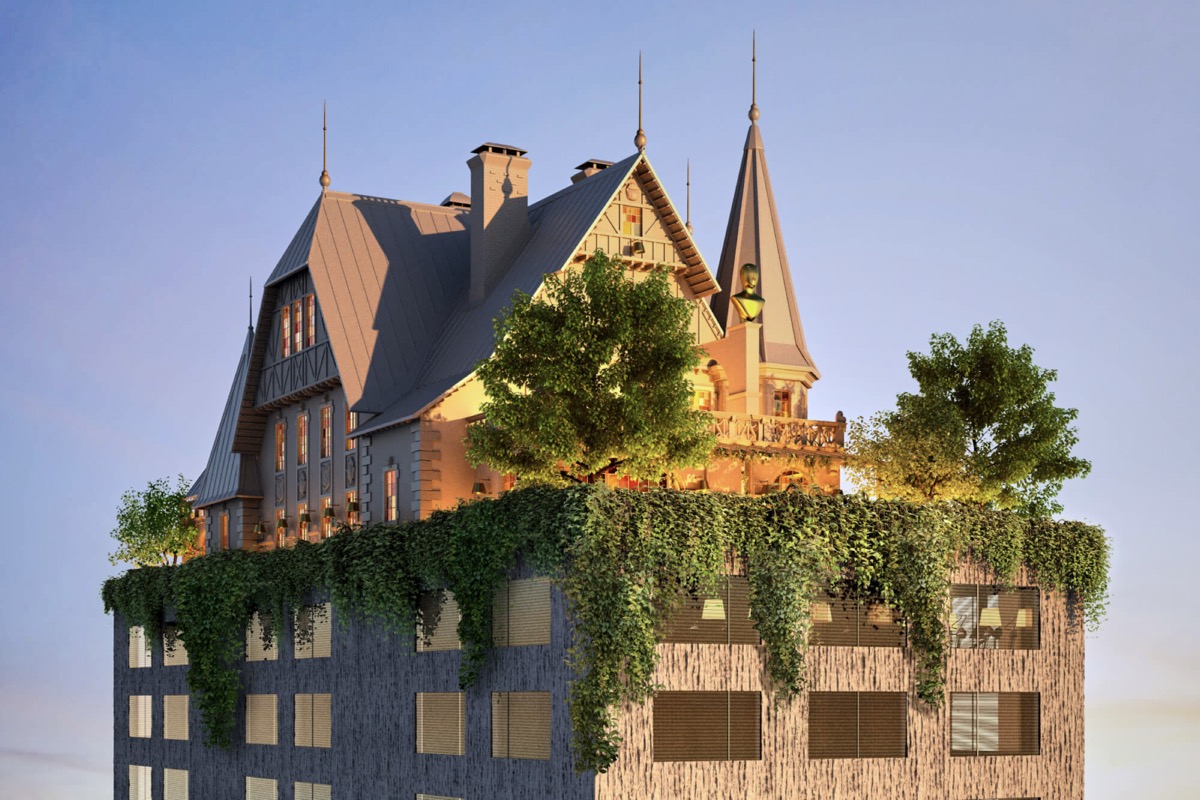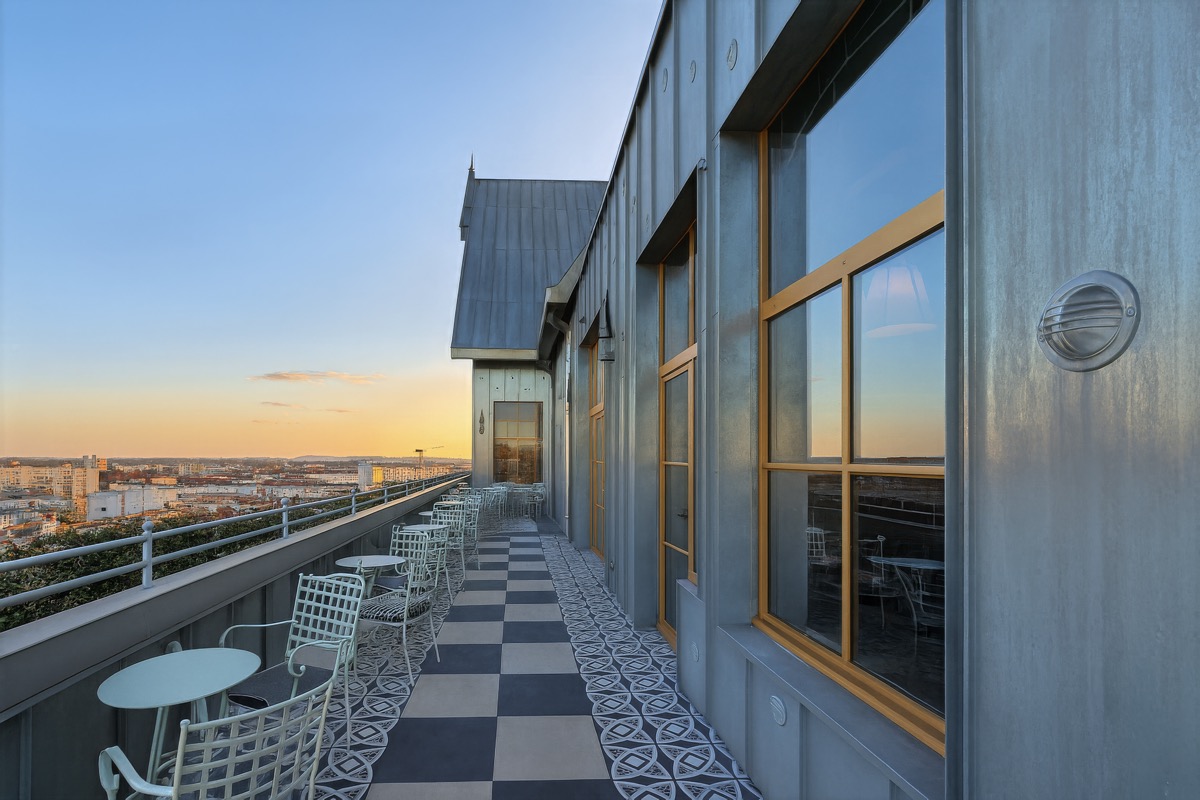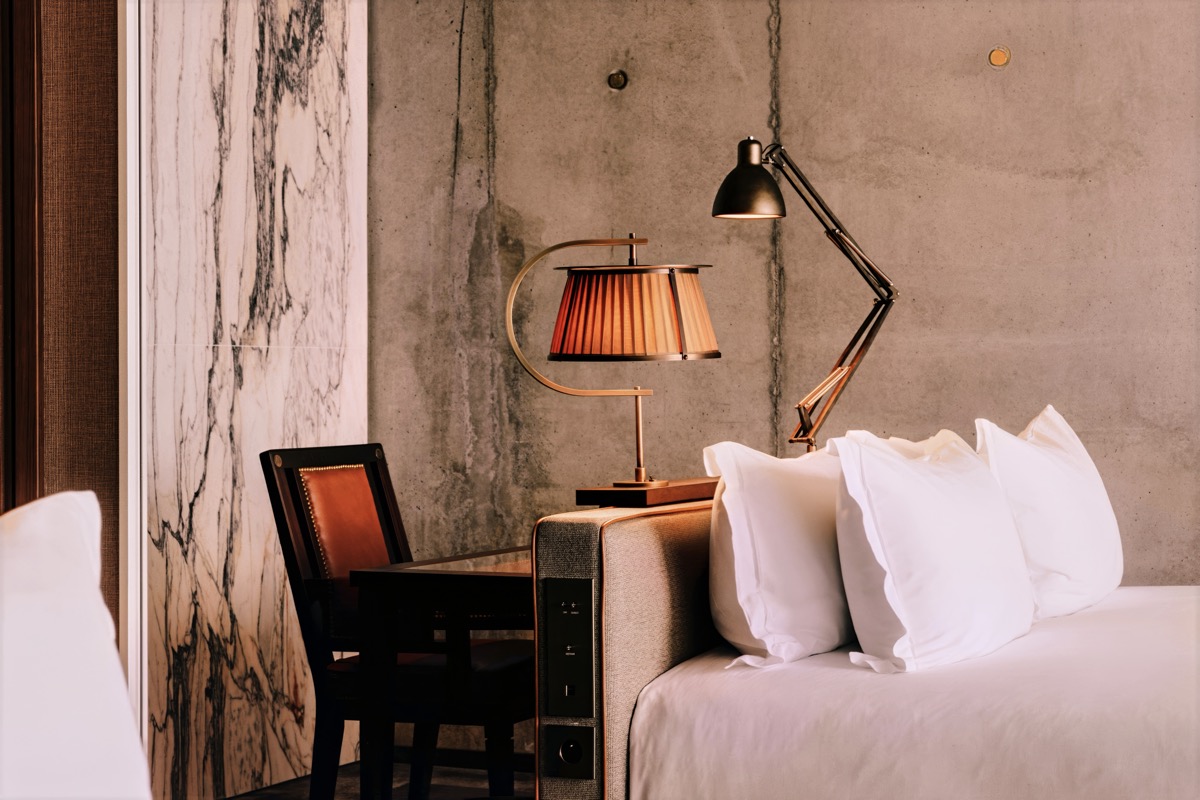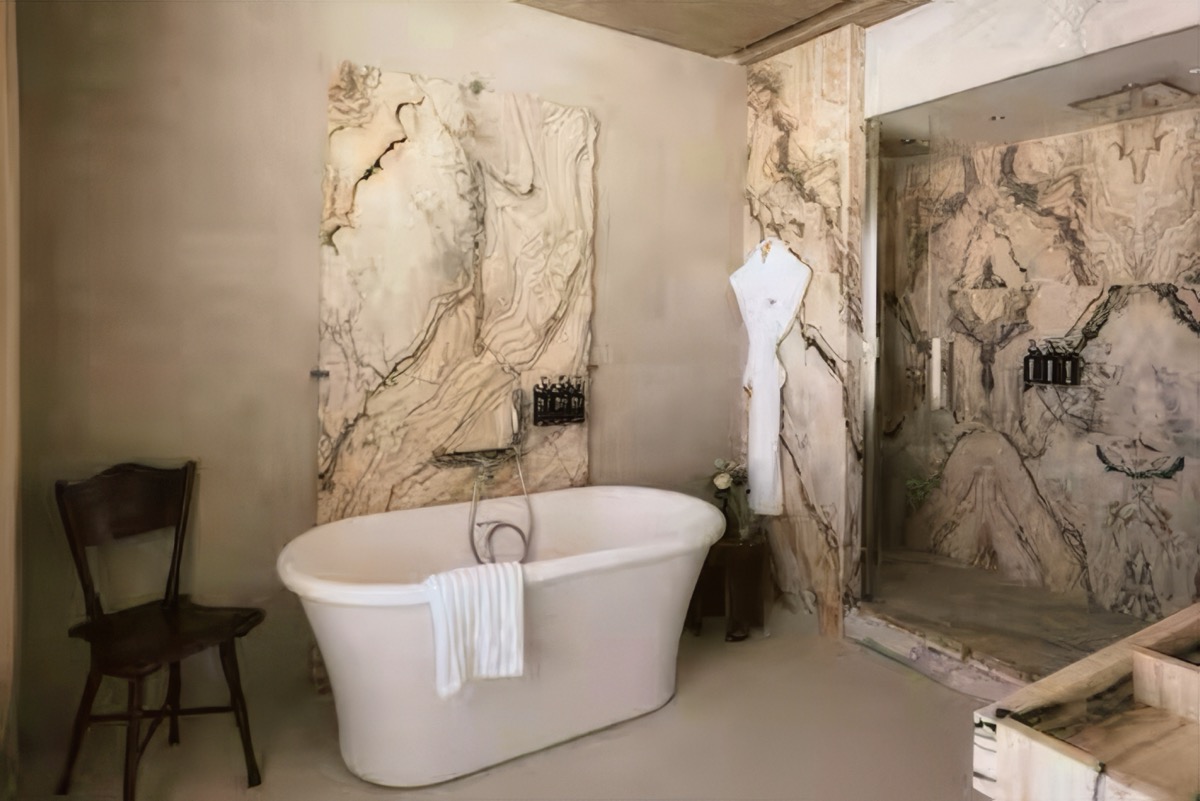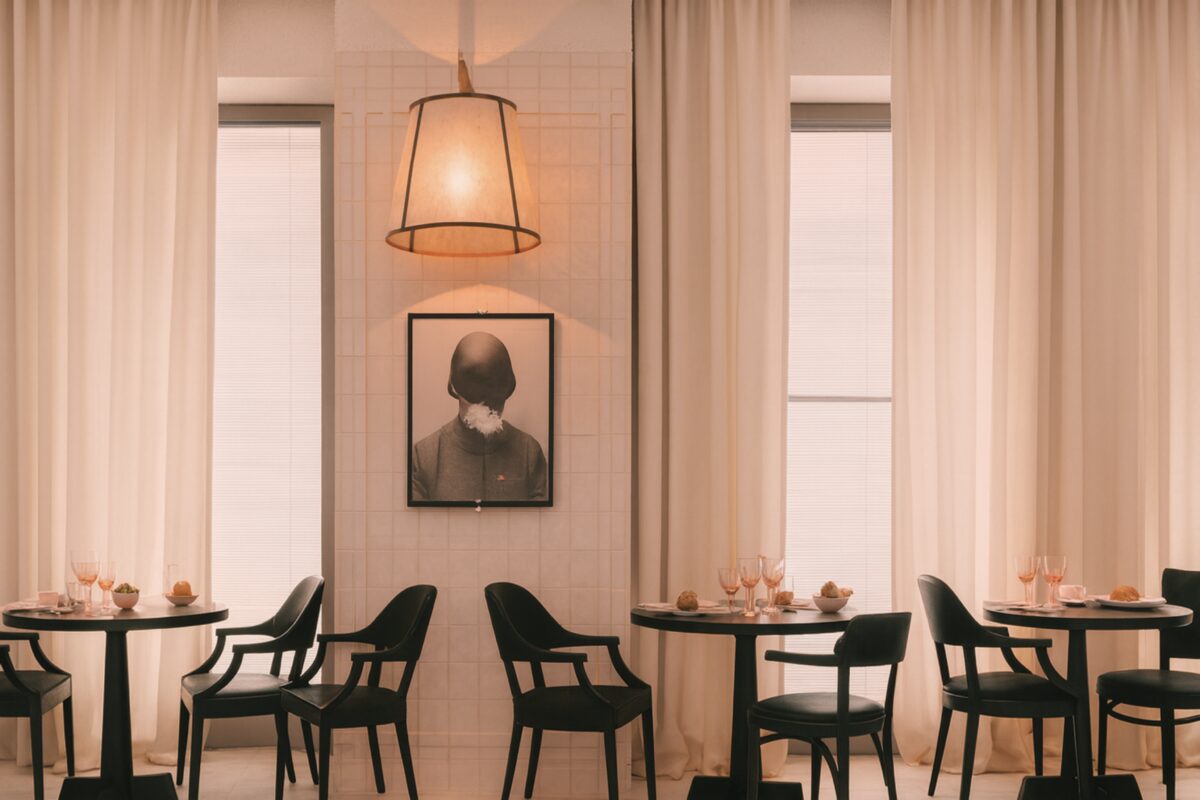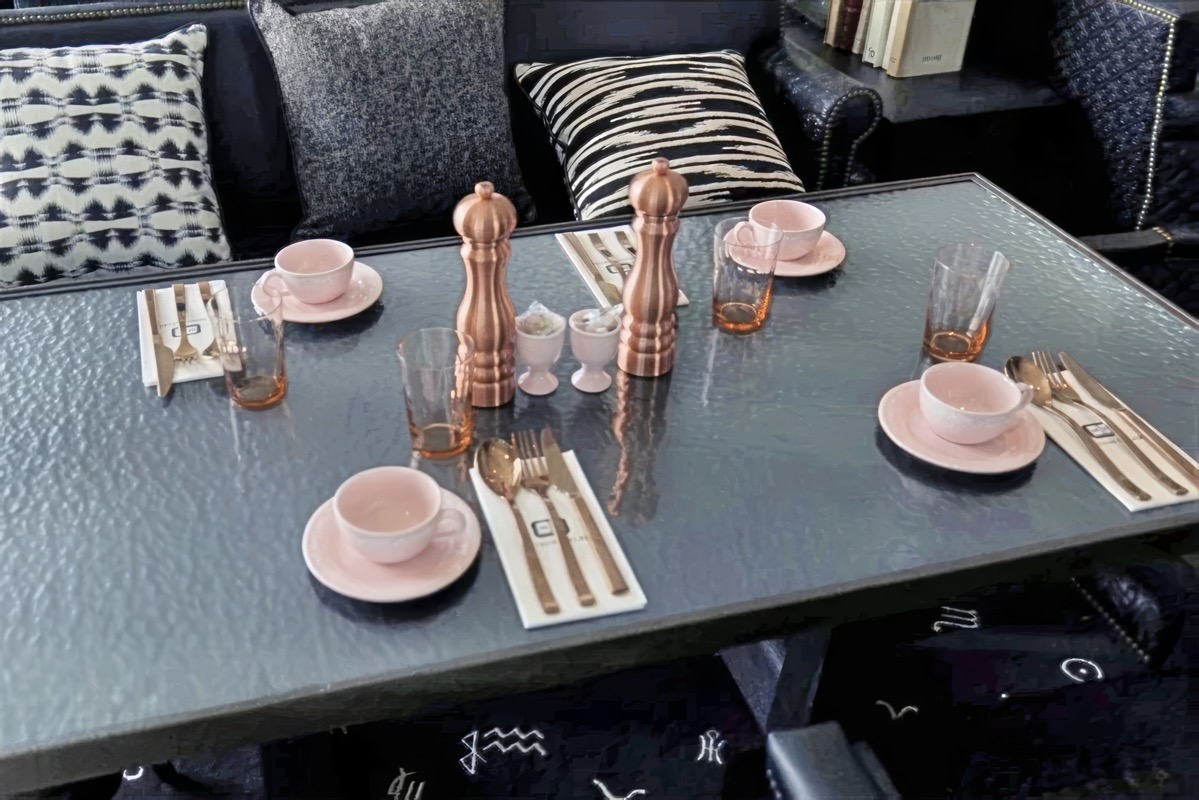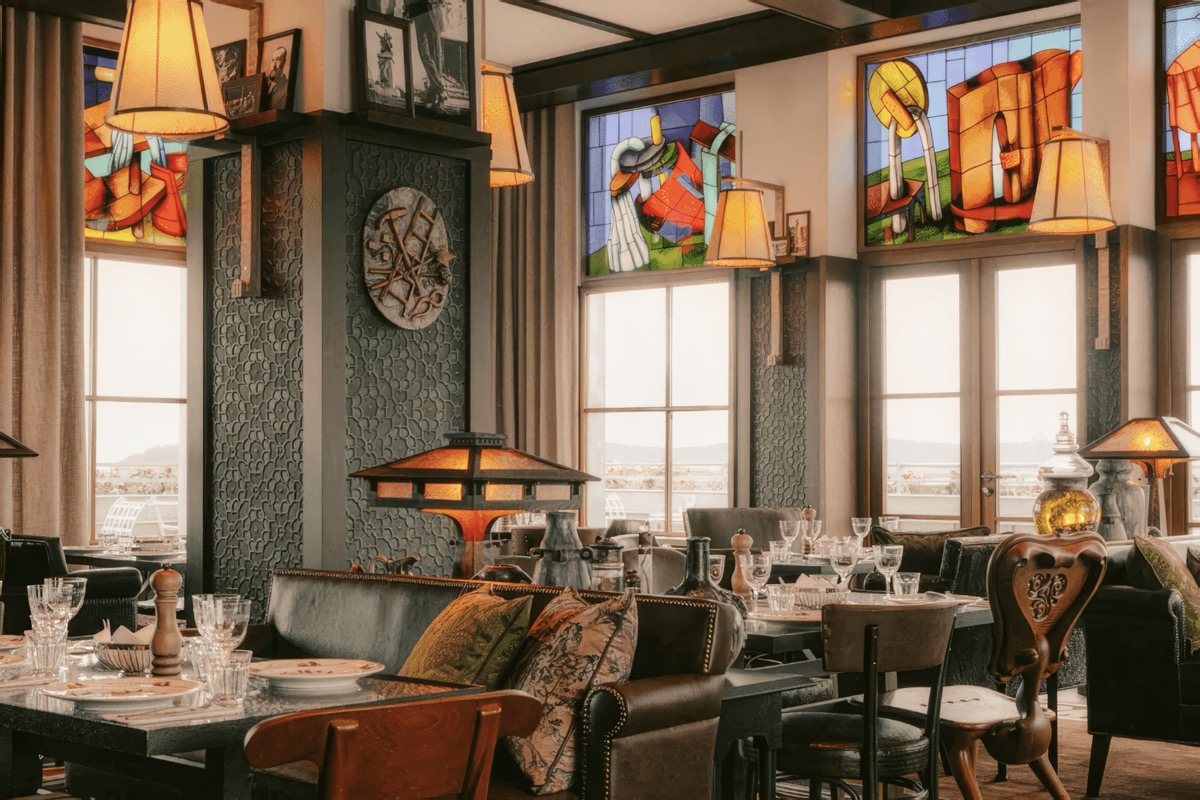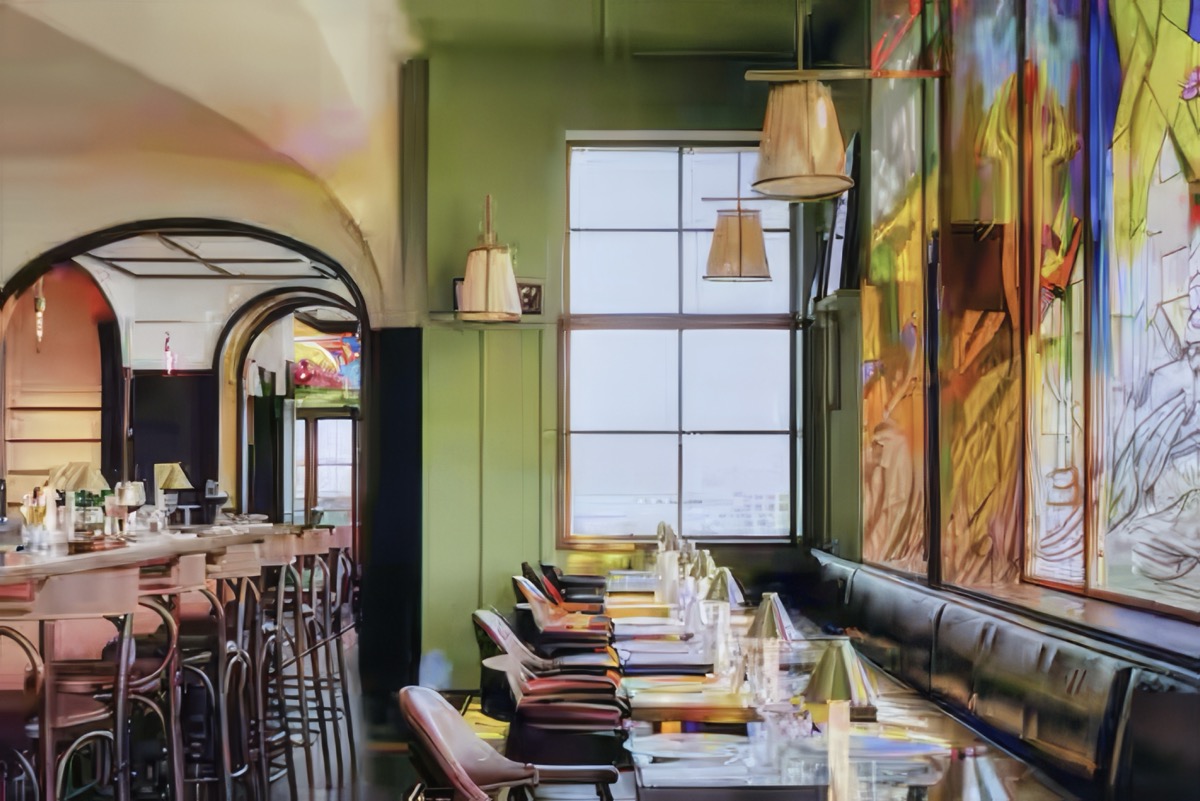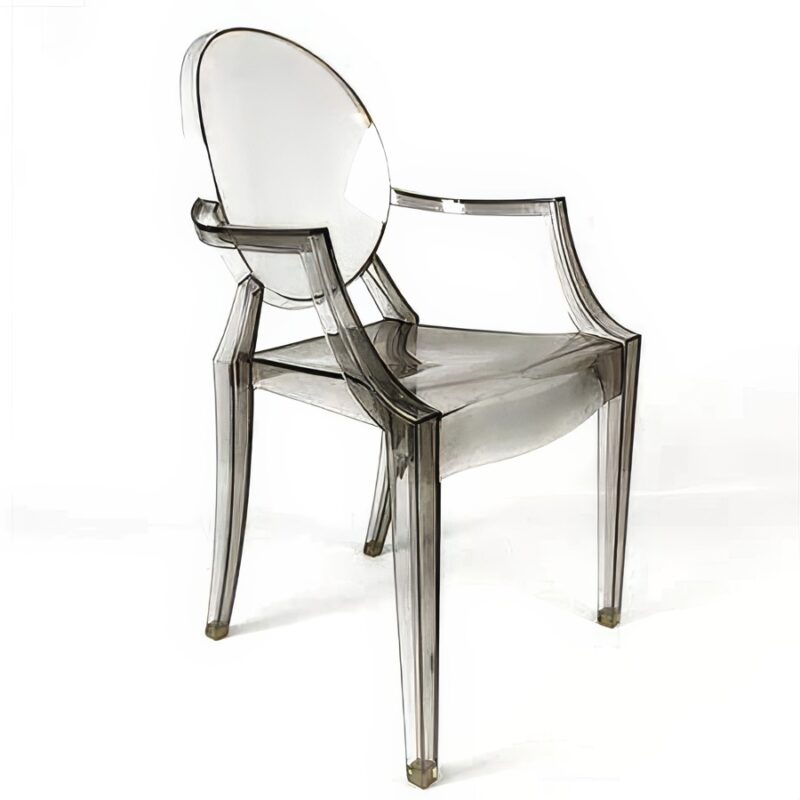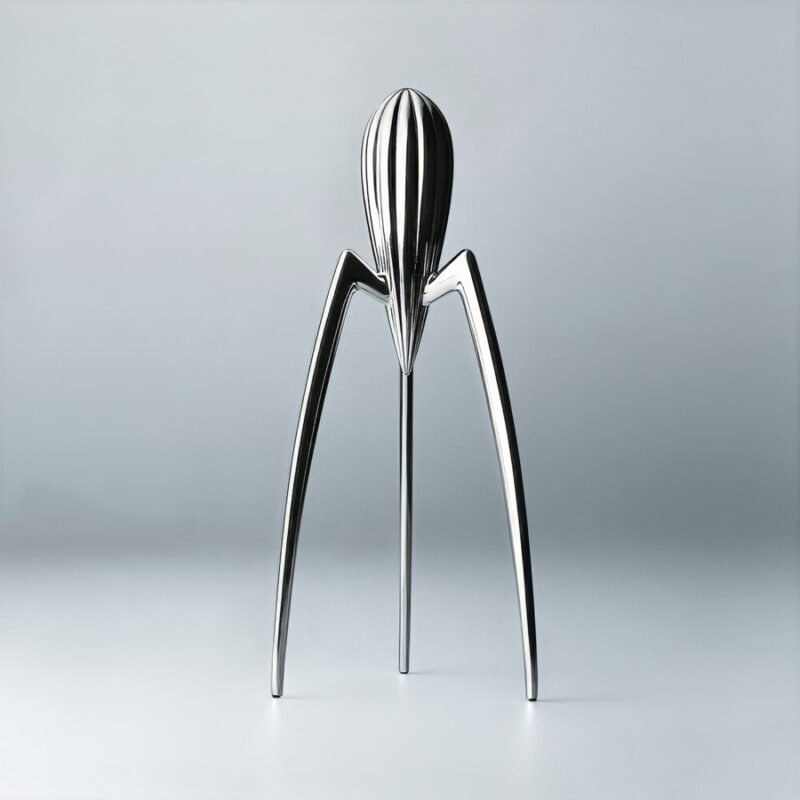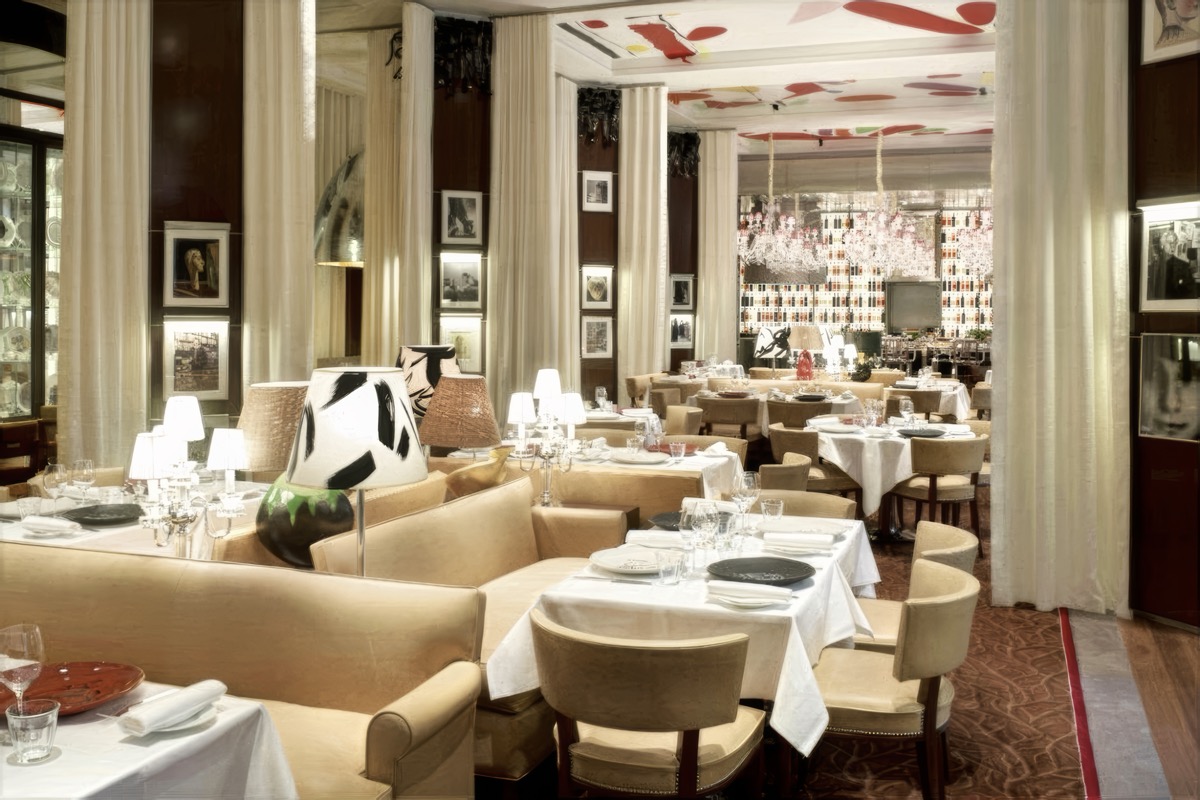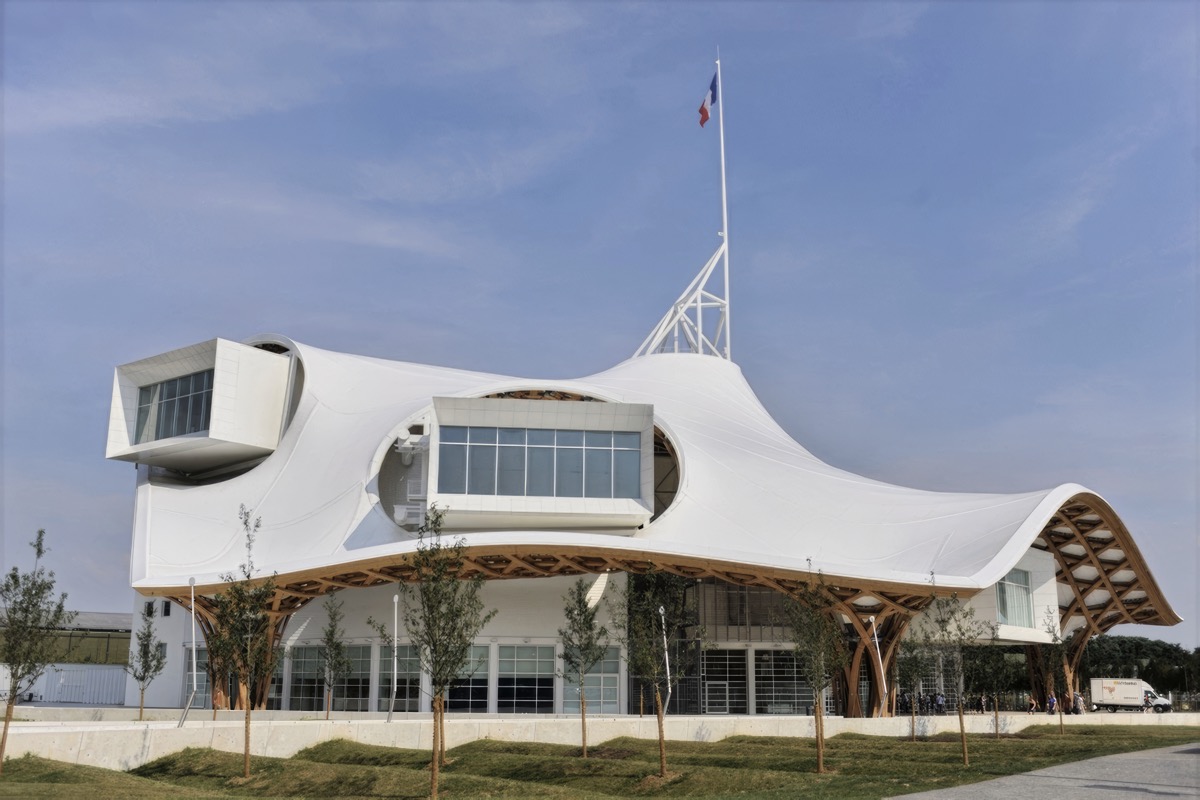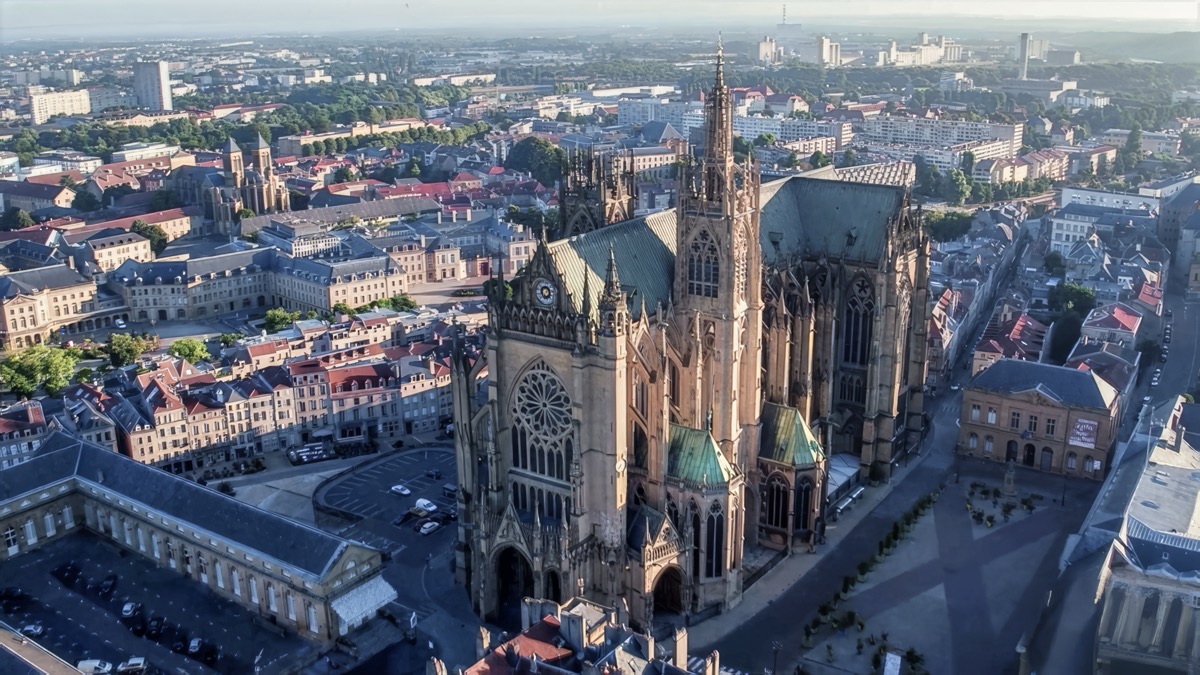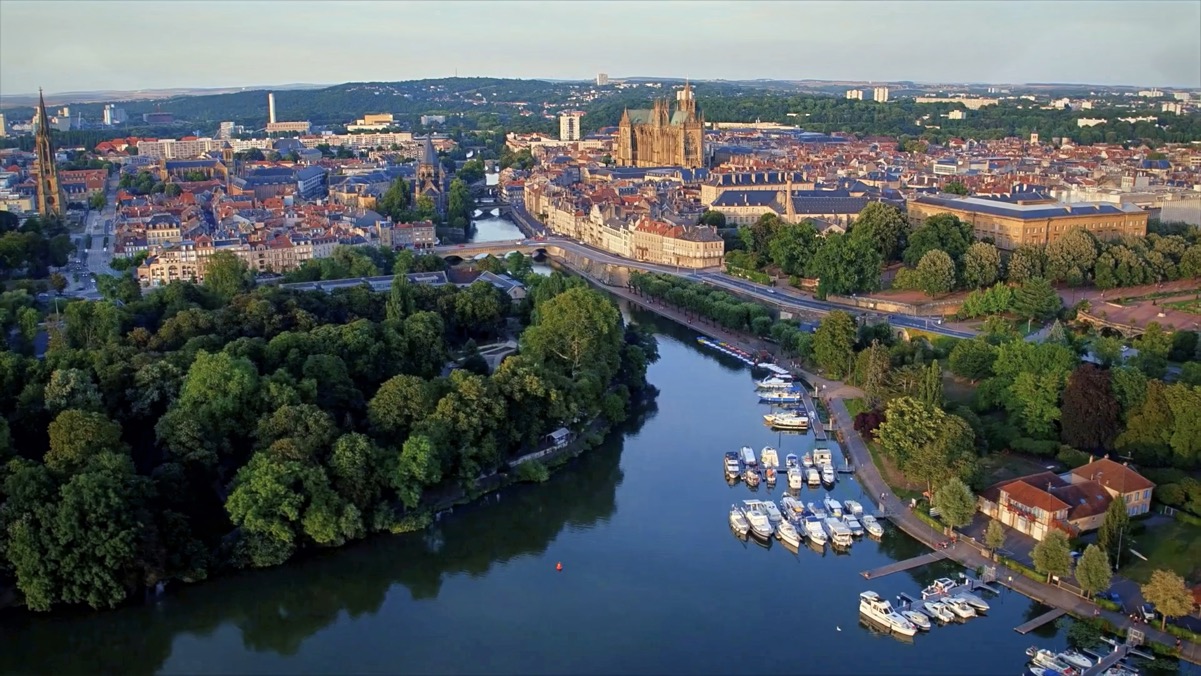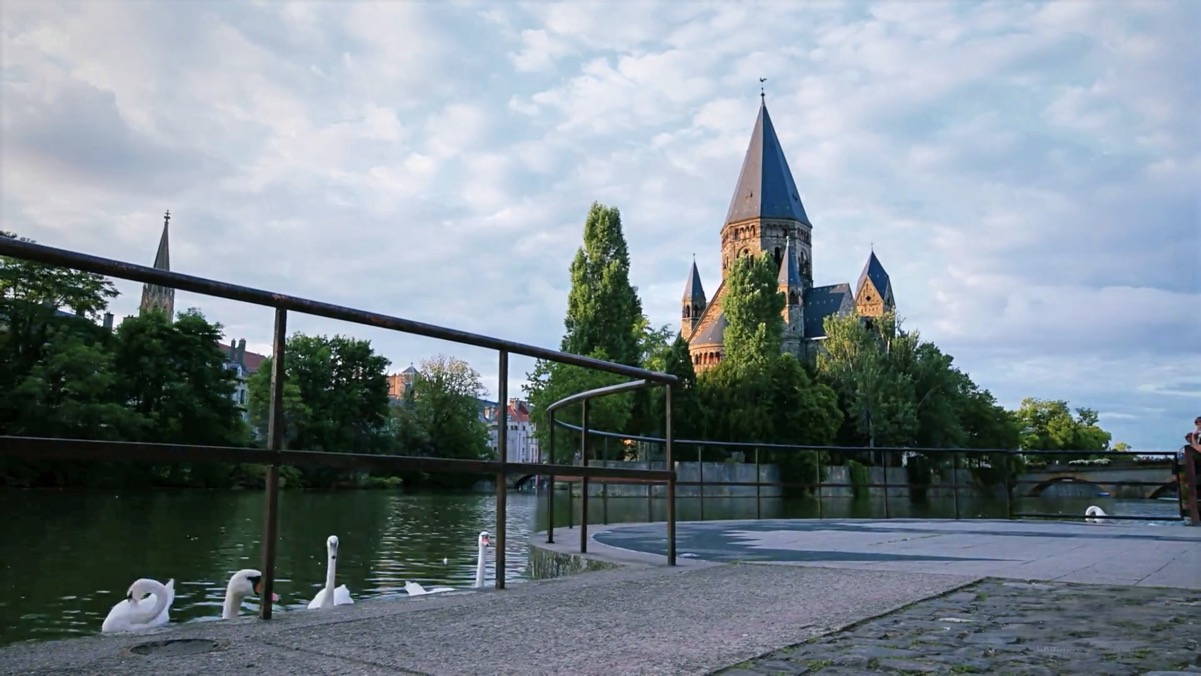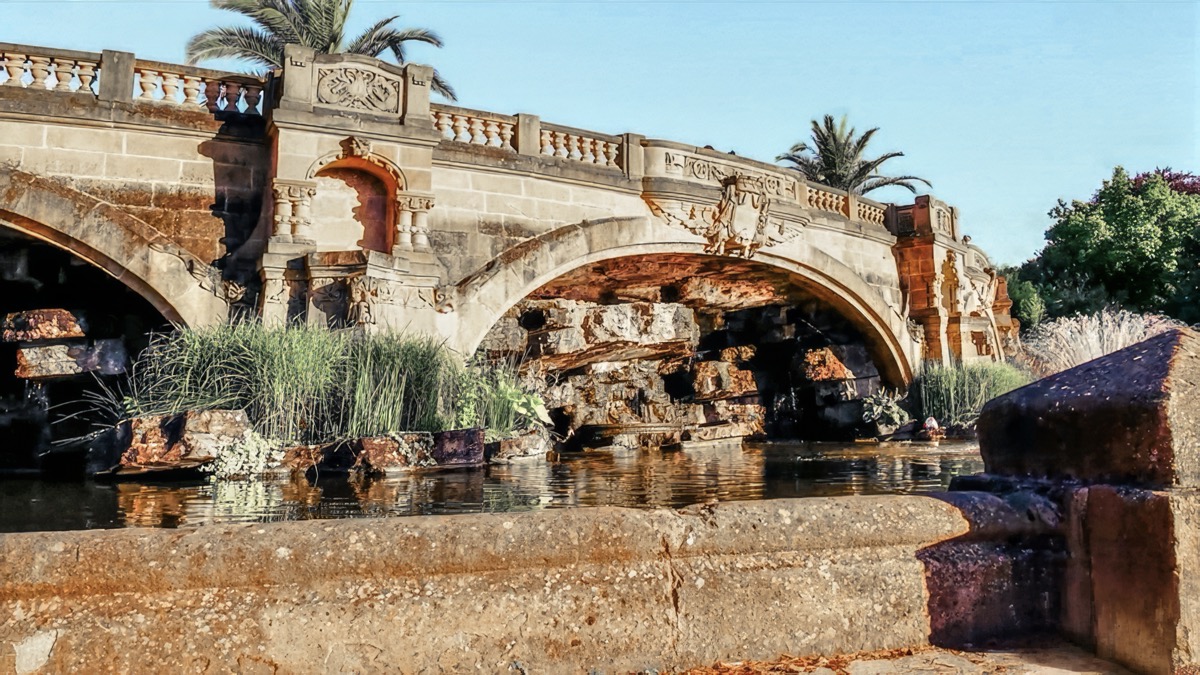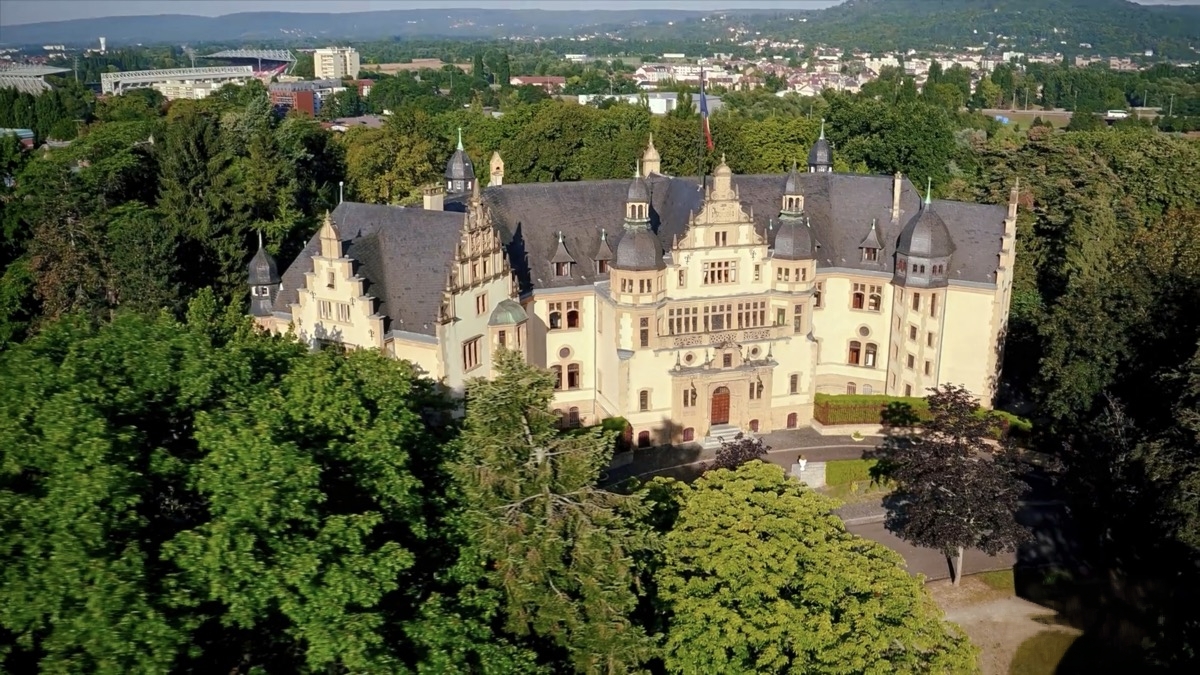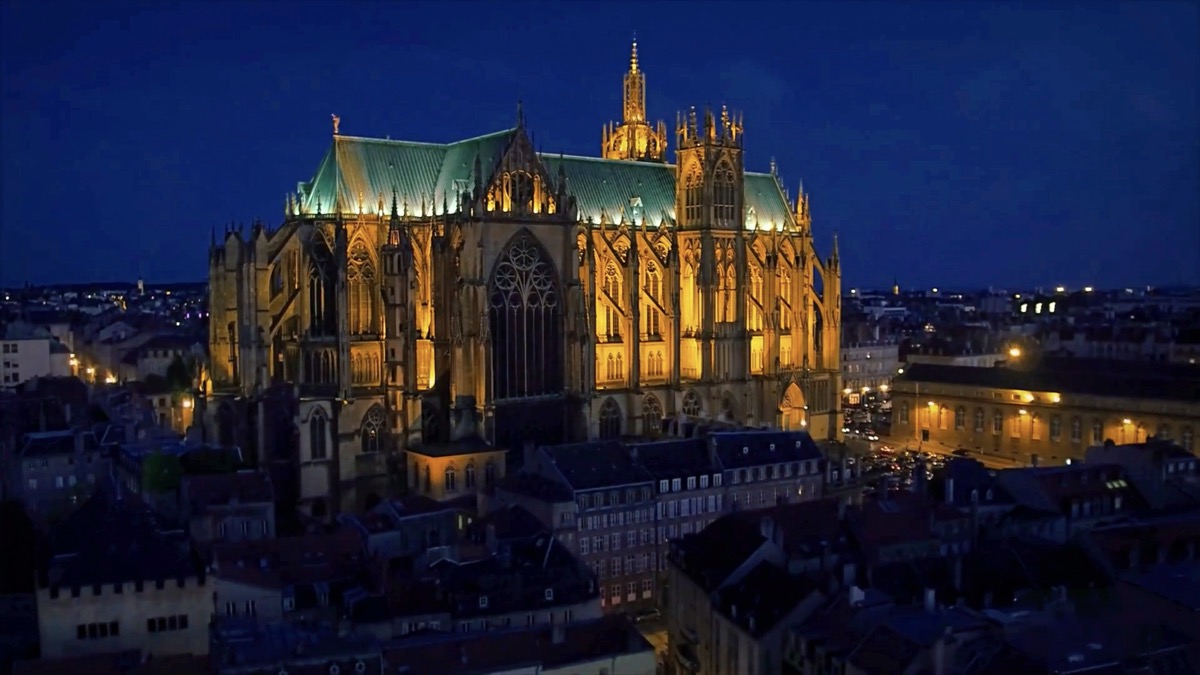Maison Heler begins with a character. Philippe Starck imagines Manfred Heler, a solitary nineteenth-century aristocrat in Lorraine, the northeastern corner of France near Germany and Luxembourg. Manfred spends his days with inventions and odd machines. One day an earthquake lifts his house off the ground and leaves it hovering above daily life.
Starck wrote this as a private novella and used it as the hotel’s backbone. By the time you ride the elevator to the ninth floor, you feel like a guest in Manfred’s home. Once you know the fable, you start to read the building. A pattern in the wallpaper becomes a clue. The shadow of a lamp suggests a side story.
First impressions land with a thud in the chest. A nine-story slab of black concrete holds a petite Lorraine-style house on its crown, a silhouette you could imagine on a Tim Burton storyboard. Inside, the drama softens into warmth. Raw concrete meets wood and leather. Terracotta floors and neat stacks of firewood steady the room. Columns wear deep green embossed leather. Antique mirrors in the lobby catch indirect light and give it back softly. The mood sits somewhere between a mountain lodge and a small museum.
Ciphers that mix alphabet letters and hieroglyphs are scattered across the wallpaper and furniture. Decode them and you will find messages from Manfred. In the restaurant, nineteen stained-glass panels created by Starck’s daughter, Ara, let layers of color drift slowly through the room as the hours pass.
The register is quiet and deliberate. Structural concrete. Clean steel frames. Calm lighting that lets shadow do part of the shaping. Comfort sits ahead of spectacle. The weight of the duvet, the reach to a shelf, the exact height of the desk. Each choice feels tested by use rather than by sketch. Guest rooms run from the second to the eighth floor. Large windows frame precise portraits of the city and help settle your mood before you step out.
There is play as well. A cipher on the wall. A tiny carving in a cabinet. You may feel the tug of a small treasure hunt. Function never bows to design. It moves with it.
On the ground floor, La Cuisine de Rose reads like a love note written in pink. The room blushes from china to lighting. Chef Alexandre Mons threads one pink ingredient into every dish. It is an easy room to use from lunch into the evening, as relaxed as a friend’s kitchen with better glassware.
High above, La Maison de Manfred sets the table inside the house itself. The view sweeps Metz in one wide arc. At dusk the stained glass spills color onto neighboring facades and the city answers with lights. The menu speaks fluent tradition with a Starck accent. Familiar bones, unexpected turns. Finish on the roof with a signature cocktail and the pleasant feeling that you have reached a last paragraph.
Starck crosses borders lightly. He made transparency feel like a material with the Louis Ghost chair. He turned a lemon squeezer into sculpture. He tuned old-world hotels to a modern pitch without stripping their character. In Metz he gives architecture and narrative the same temperature and offers a new angle on the city. The hotel is still a machine for sleeping, eating, and idling, yet a fable moves through it. That coexistence is the house style.
Born in 1952 in the Paris suburb of Mantes-la-Jolie, Starck is France’s most recognizable industrial designer turned architect. In Japan he is widely known for the golden flourish on the Asahi headquarters in Asakusa. His range runs wide on purpose. Furniture and tableware. Interiors and buildings. Yachts and, yes, toilets. Light materials, a wink in the form, and a devotion to use give his work its steady rhythm. He prefers objects that improve daily gestures rather than objects that only call attention to themselves.
Signatures and Experiments
Over the decades Starck has left a trail of objects and places that behave like characters.
Louis Ghost chair, 2002. A transparent polycarbonate classic that turned invisibility into style.
Juicy Salif, 1990. A tripod lemon squeezer, more icon than tool yet perfectly at home on a counter.
Le Royal Monceau, Paris, circa 2010. A palatial hotel rewired for the present without losing its glamour.
Centre Pompidou-Metz, 2010. A sinuous, light-framed roof that shelters galleries like sails.
Aérotech toilet, 2005. Everyday porcelain sharpened by hygiene and line.
Taken together they show three recurring pursuits. Product as a small revolution. Space as an edit. The city as a conversation partner.
| Category | Work / Project | Year | Notes |
|---|---|---|---|
| Furniture / Product | Louis Ghost Chair | 2002 | Transparent polycarbonate chair with a ghostlike presence |
| Kitchenware | Juicy Salif Citrus Squeezer | 1990 | Iconic tripod silhouette that turned a tool into sculpture |
| Interior / Spatial Design | Renovation of Le Royal Monceau, Paris | circa 2010 | A historic palace reimagined with a contemporary edge |
| Architecture | Centre Pompidou-Metz | 2010 | Sweeping roofline and light structural expression |
| Everyday Object | Aérotech Toilet | 2005 | Light silhouette with a focus on hygiene and comfort |
Metz sits in Grand Est in the northeast of France, close to Germany and Luxembourg. It has long been a hinge between cultures and trade routes. From Paris it is about 320 kilometers, roughly ninety minutes by TGV. Strasbourg is about an hour by rail. The city pairs luminous history with contemporary art and works well as a day trip from the capital or as a quiet base for a weekend.
Begin with Cathédrale Saint-Étienne, a Gothic masterpiece whose stained glass has earned the nickname festival of light. Construction stretched from the thirteenth to the sixteenth century. Today medieval windows sit beside modern commissions. Roman traces thread the streets. You will find fragments of walls and the Pont des Roches. At the Porte des Allemands, a fortified bridge-gate, the city’s emblem doubles as a favorite camera perch.
The Centre Pompidou-Metz opened in 2010 and brings the collections and spirit of Paris’s modern art temple to the east under that memorable flowing roof. Exhibitions rotate with an international reach. Nearby, the Musée de la Cour d’Or gathers archaeology, decorative arts, and architecture to tell Lorraine’s long story from Rome to now.
Water, Green, and Quiet
Walk the promenades along the Moselle. The river mirrors the skyline and summer boats move at an idle. The Esplanade offers lawns and alleys where joggers and picnickers trade space. In the Jardin Botanique de Metz, four hectares stitch together plant life from around the world. It is an easy loop through the seasons.
Rates and Practicalities
Rooms generally start around €170 per night.
Address 31, rue Jacques Chirac, 57000 Metz, Amphithéâtre district
Telephone +33 3 56 63 16 31
Website: maisonhelermetz.com
I love Philippe Starck’s design and have been collecting his collaborations with the Italian maker Alessi for years, picking up pieces the way other people adopt favorite records. I even own the lemon squeezer in the photo called Genuine. It lives on my counter like a little sculpture. When I actually squeeze lemons I use an electric juicer, though; convenience wins in the kitchen. What keeps me coming back to Starck is the balance he finds between qualities that usually resist each other. The objects feel inorganic and minimal, almost austere, yet there is always a seam of humor running through them. Even in his own portrait photos he manages to clown with a straight face, as if the joke and the serious intention were partners rather than rivals.
Metz is close enough to Paris for a day trip, but I would not do it that way. I would stay one night at the Manfred Heller Hotel and return the following day. For a design hotel the rate comes in lower than many business hotels in Paris, which is part of the pleasure of traveling outside the capital. If there is a little slack in the schedule, I would keep going to Colmar and Strasbourg and turn it into a small tour of northeastern France. The trains make it easy, and the change in mood begins as soon as you step out of the station.
That corner of the country has a character all its own, different from Paris, the south, or Brittany. The streets feel simple and pretty, as if someone took the most charming pieces of France and Germany and set them side by side. Timber frames, tidy squares, and cafés that seem to know their regulars by the sound of their shoes. You sense the geography as well, with Luxembourg and Germany close enough to shape the food, the accents, and even the pace of a morning.
Paris will always have its pull, but it also has crowds and noise. If you prefer a quieter, more unhurried trip, take the TGV an hour or two into the regions. You can visit cathedrals and museums without standing in long lines, and you can give each place the time it deserves. Prices are kinder outside the capital, which helps.
People often say that folks in the north of France are warm, and I have found that to be true. There are many kind people, the sort who will point you toward a better bakery or slow their speech when they sense you are searching for words. You do not need to worry if you are traveling alone, or if it is a trip with just girls; it is the kind of place where strangers hold doors without ceremony and directions come with a smile. Take the train, take your time, and let the region show you why understatement can be its own form of welcome – something Starck, in his way, has been telling us all along.
